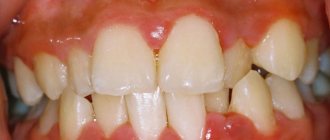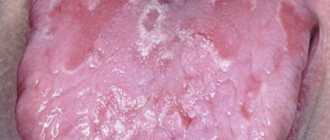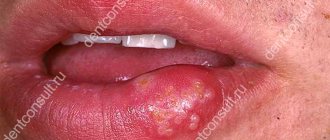Visually, a fistula is a hole in the gum, directly connected to the source of inflammation located near the upper part of the root of any of the teeth. Typically, the fistula opening is located just above the diseased tooth, which is either filled or has a carious formation. Periodontitis is a disease characterized by the appearance of a fistula.
Development of a fistula on the gum
The process of fistula formation takes a fairly long period of time: for this to happen, inflammatory processes must occur in the tissues of the damaged tooth.
The stages that a tooth usually goes through before a fistula appears are as follows:
- caries is formed;
- the disease goes into a deep form;
- the development of caries leads to the formation of pulpitis;
- the last stage is periodontitis.
If you ignore periodontitis and do not take measures to treat it, the disease becomes chronic. At the moment of exacerbation, purulent masses come out through the fistulous tract formed in the gum.
Is it really that dangerous if left untreated?
☣️ You can endure the pain, but the abscess will not go away so easily. As the purulent abscess develops, it provokes pathological processes in the gums:
- secondary lesions with pus appear;
- the breakdown of red blood cells in the blood plasma begins (intravascular hemolysis);
- the body is poisoned (toxemia);
- blood clots form (DIC syndrome);
- blood pressure decreases;
- infectious-toxic shock occurs.
As a result, the abscess destroys the structures of the periosteum and periodontium. The bone tissue of the jaw decreases, the tooth at the site of the abscess becomes loose. The pus will begin to spread through the blood and lymph unless a fistula is formed or the abscess is opened surgically. If the course is prolonged, the risk of losing a tooth or implant increases.











